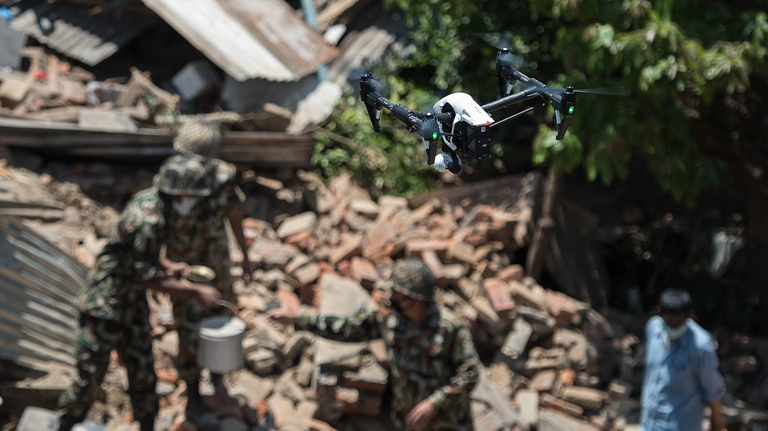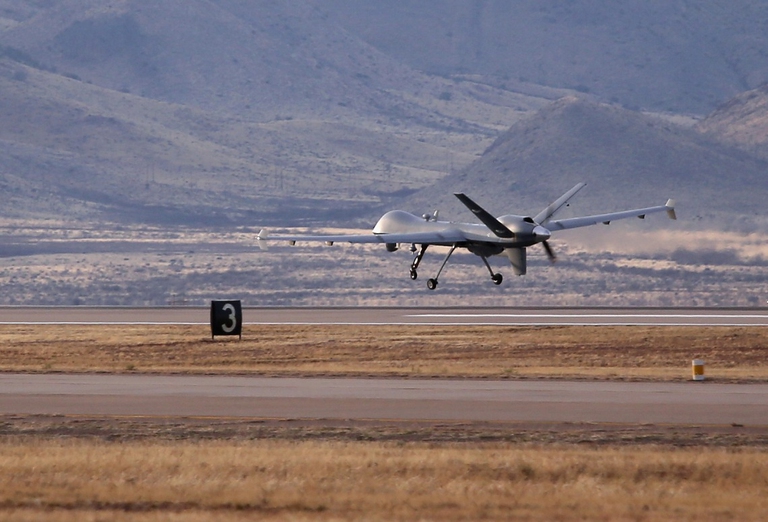
As per tradition after 12 years India held Mahakumbh, the world’s largest spiritual congregation that has been attracting pilgrims from across the globe.
In April 2015 a 7.8 magnitude earthquake struck Nepal, and the population was highly unprepared to face the devastation. Only 5,000 people were available to rescue the more than 8 million affected. GlobalMedic, a rescue unit from Canada, was able to use drones, or Unmanned Aerial Vehicles (UAVs), to identify thousands of survivors among what
In April 2015 a 7.8 magnitude earthquake struck Nepal, and the population was highly unprepared to face the devastation. Only 5,000 people were available to rescue the more than 8 million affected. GlobalMedic, a rescue unit from Canada, was able to use drones, or Unmanned Aerial Vehicles (UAVs), to identify thousands of survivors among what remained of temples and towns.
Drones for humanitarian aid could be the future. UAVs can access scenes that people can’t, collecting an incredible amount of information at a much lower cost than what is employed in traditional search-and-rescue operations. They can also be used for wildlife watching, environmental monitoring, forest fire detection and delivering medical supplies to remote or otherwise inaccessible areas. The technology, however, also raises questions about air safety, privacy, security and ethics.
Drones’ use as military weapons is what people usually associate them with. Like the internet, they were created with military purposes in mind as early as World War II but it was not until the Vietnam War that they were used for combat operations, due to the many lives lost and cost of missions during the conflict. And as happened with the internet, drone technology is evolving faster than laws, and national regulations vary greatly from country to country.
Drones have been used in situations as disparate as monitoring and preserving South American archaeological sites such as Machu Picchu in Peru, extinguishing fires in southern California and aiding rescue missions during hurricane Sandy, which hit the northeastern coast of the United States in 2012. They were used in 2013 by the UN’s mission to the Democratic Republic of the Congo, Monusco, to survey the borders and help combat the Ugandan rebels of the Allied Democratic Forces, protecting civilians and used as deterrents against hostile fighters. However, when Monusco proposed to use them to gather information for humanitarian purposes international NGOs refused for fear that this information might be shared with the military, therefore compromising the core principles of relief organisations, namely neutrality, impartiality and operational independence.
There is a strong need for a code of conduct and best practices in using drones for humanitarian aid according to Patrick Meier, an expert in humanitarian technology innovations and the founder of the Humanitarian UAV Network. At a symposium on drones held in Washington, DC in July he urged the drafting of clear data ethics as well as a partnership between humanitarian organisations, drones teams and local authorities to coordinate their actions and sharing of data.
Drones will be used to fly products to our doorstep, as Amazon, Google and Walmart are trying to do in the near future, or they can be the consumer’s dream toy. However, they can also be employed for spying and this dichotomy is scaring many even from accepting their use for humanitarian and peacekeeping purposes.
Siamo anche su WhatsApp. Segui il canale ufficiale LifeGate per restare aggiornata, aggiornato sulle ultime notizie e sulle nostre attività.
![]()
Quest'opera è distribuita con Licenza Creative Commons Attribuzione - Non commerciale - Non opere derivate 4.0 Internazionale.
As per tradition after 12 years India held Mahakumbh, the world’s largest spiritual congregation that has been attracting pilgrims from across the globe.
Workers in tea gardens of West Bengal, India, that produces Ctc tea for domestic consumption complain that they have been devoid of basic facilities while political parties make hollow promises during every elections which are never fulfilled.
India is in the middle of the elections, but sadly none of the politicians have uttered a word on man-animal conflict that has been devouring several lives every year.
Manipur, a state in north-east India, is still reeling under the tremors of violence that broke out last year devouring lives and paralyzing the economy.
The government of Tanzania is currently planning to evict more than 80.000 indigenous Maasai people from their ancenstral land
A new UNU-INWEH report on the global bottled water industry reveals the massive scale of this market and the lack of strict quality controls.
Isatou Ceesay founded a social enterprise that is helping to fight plastic pollution and empowering women and young people to gain economic independence.
In 2020, Mihela Hladin made a radical decision that many, in recent times, have probably considered. This is her story, with photos by Matt Audiffret.
The Brazilian government has started evicting illegal gold miners, responsible for the health emergency that has hit the Yanomami people.









